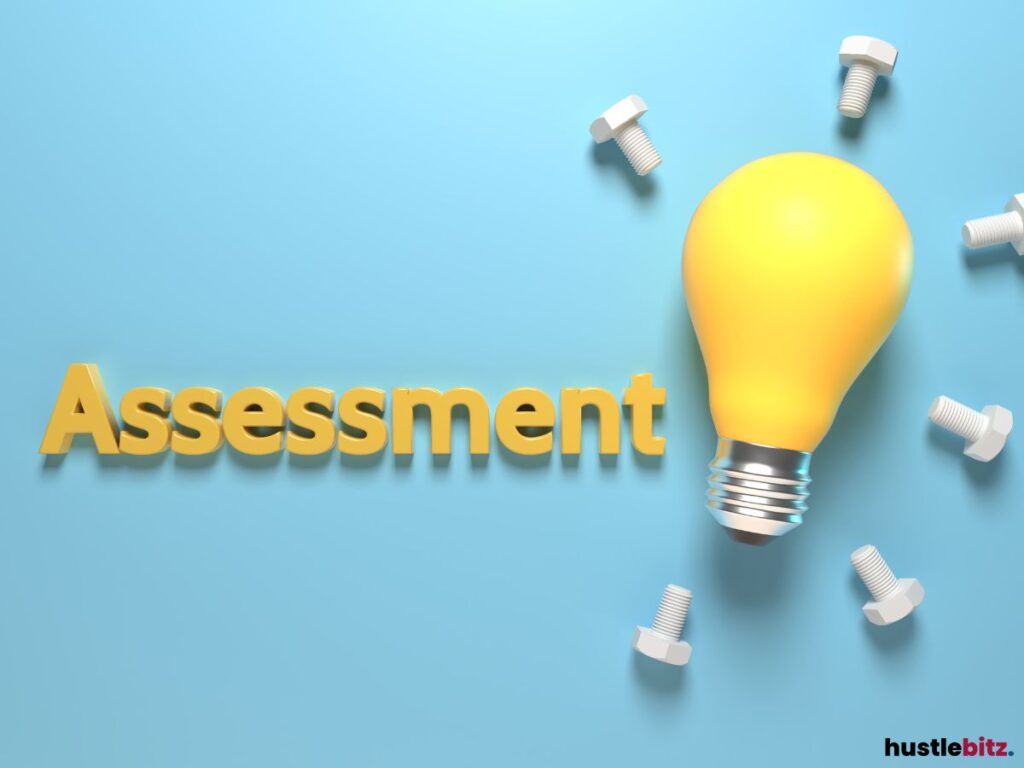Strategizing your path to career success involves a systematic approach. Start by defining clear career goals that align with your values. Assess your current skills and identify areas for enhancement, utilizing tools like online courses and mentorship. Research industry trends to stay informed and create a strong professional network through events and social media. Gain relevant experience through internships or volunteer work. Cultivating adaptability is key for navigating change. Lastly, regularly evaluate your progress to stay on track. These strategic steps provide a solid foundation for achieving career success, offering insights that can propel your professional journey forward.
Key Takeaways
- Define clear career goals by aligning your vision with measurable short-term and long-term objectives.
- Assess your skills and identify gaps through self-assessment tools and feedback from colleagues.
- Research industry trends and network with professionals to stay informed and adapt effectively.
- Seek mentorship to gain diverse perspectives and constructive feedback for your career growth.
- Develop a personal brand that communicates your unique value and expertise consistently across platforms.

Step 1: Define Your Career Goals

Defining your career goals serves as the foundational step in creating a strategic plan for professional growth and advancement. A clear career vision not only illuminates your path but also aligns your short-term goals with your long-term aspirations. This alignment is crucial, as it ensures that your daily actions contribute meaningfully to your overarching ambitions.
To develop effective career goals, begin by identifying your personal values and examining how they intersect with your passions. Passion alignment fosters professional motivation, making it easier to stay committed to your objectives.
Once you possess a solid understanding of your values and interests, establish measurable objectives that can track your progress. These objectives should be specific, attainable, and time-bound, allowing you to assess your performance against defined success metrics.
Additionally, staying informed about industry trends is vital for recognizing future opportunities that align with your career vision. This awareness enables you to adapt your goals as necessary, ensuring they remain relevant in a rapidly changing landscape.
Step 2: Assess Your Current Skills

Evaluating your current skills is essential for identifying gaps that may hinder your progress toward achieving your career goals. A systematic approach to assessing your skills will help you understand where you stand and what areas require improvement. Begin by conducting a skills inventory and using self-assessment tools to evaluate your personal attributes and learning styles. This process involves competency mapping, where you align your existing skills with the demands of your desired role.
In addition, feedback analysis from colleagues and supervisors can provide valuable insights into your strengths identification and performance metrics. This feedback not only highlights your competencies but also reveals skill gaps that need to be addressed through targeted professional development.
The table below outlines key components to consider when assessing your skills:
| Assessment Component | Purpose |
| Skills Inventory | Identify current abilities |
| Competency Mapping | Align skills with career goals |
| Self-Assessment Tools | Reflect on personal attributes |
| Feedback Analysis | Gain insights from others |
| Learning Styles | Understand how you best acquire skills |
Step 3: Research Your Industry

Understanding your skill gaps lays the groundwork for the next step: researching your industry to gain insights into trends, opportunities, and the competitive landscape that can shape your career trajectory. This research is essential for aligning your skills with market demands and positioning yourself strategically for future roles.
To effectively research your industry, consider the following approaches:
- Stay Updated on Industry Trends: Follow relevant industry publications and online platforms to monitor shifts in market demands and emerging technologies that could impact your career.
- Conduct Competitor Analysis: Identify key players in your field to understand their strengths and weaknesses. This knowledge can inform your own career strategy.
- Analyze Regulatory Changes: Keep abreast of any new regulations affecting your industry. Understanding these shifts can help you adapt and remain compliant.
- Engage with Professional Associations: Join organizations related to your industry. They often provide valuable resources, including reports on job outlook and access to networking events.
- Participate in Networking Events: Attend seminars, workshops, and conferences to connect with industry professionals. These opportunities can lead to insights about skill gaps and emerging job roles.
Step 4: Create a Professional Network
Building a robust professional network is crucial for advancing your career and uncovering opportunities that may not be publicly advertised. Effective networking strategies involve both online and offline efforts, allowing you to broaden your reach and enhance visibility within your industry.
One of the most impactful methods is attending industry events, where you can engage face-to-face with key professionals and establish meaningful connections.
In addition to in-person interactions, leveraging social media platforms can facilitate relationship building. Engaging with peers and industry leaders online enables you to stay informed about trends and opportunities, while also showcasing your own expertise.
Participating in professional associations can further enhance your networking efforts, providing platforms for collaboration opportunities and shared resources.
Informational interviews are another powerful tool in your networking arsenal. By proactively seeking conversations with individuals in your field, you can gain valuable insights and establish rapport. Remember to observe networking etiquette—be respectful of others’ time and express genuine interest in their experiences.
As you cultivate your professional network, consider the potential of mentorship networks. While we will explore mentorship opportunities further in the next step, building foundational relationships now will prepare you for future collaborations and guidance.
Step 5: Seek Mentorship Opportunities

As you expand your professional network, seeking mentorship opportunities can significantly enhance your career development and provide invaluable guidance from experienced individuals in your field.
Mentorship benefits extend beyond mere advice; they foster an environment for effective communication, enabling you to navigate career transitions with greater confidence. Finding mentors who align with your career goals can lead to long-term connections that enrich your professional journey.
When engaging with potential mentors, consider the following:
- Identify Specific Goals: Clearly define what you hope to achieve through mentorship.
- Choose Diverse Perspectives: Seek mentors from various backgrounds to gain a broader understanding of your field.
- Establish Mentor Roles: Clarify expectations to ensure a productive relationship.
- Emphasize Feedback Importance: Encourage open dialogue to receive constructive criticism that can propel your growth.
- Set Boundaries: Respect each other’s time and expectations to maintain a healthy relationship.
Building relationships with mentors requires a proactive approach—reach out, express your interest, and maintain consistent communication.
Remember, mentorship is a two-way street; be open to sharing your insights and experiences. By investing in these relationships, you not only gain knowledge but also contribute to a network of support that can guide you through various career transitions.
Ultimately, mentorship can help you acquire the skills and insights needed to thrive in your profession, facilitating personal and professional growth.
Step 6: Develop a Personal Brand
Creating a personal brand is essential for differentiating yourself in a competitive job market and establishing a lasting professional identity. Personal branding encompasses the strategies you employ to communicate your value proposition and visual identity, both online and offline. It requires intentionality, authenticity, and consistency to cultivate a professional reputation that resonates with your target audience.
To effectively develop your personal brand, consider the following elements:
| Element | Description | Action Items |
| Online Presence | Your digital footprint across platforms | Optimize social media profiles |
| Visual Identity | Consistent imagery and design choices | Create a professional logo |
| Storytelling | Engaging narratives about your journey | Share experiences through blogs or posts |
Utilizing social media as a tool for personal branding allows you to showcase your expertise and connect with like-minded professionals. Employ storytelling techniques to share your career journey, highlighting challenges you’ve overcome and lessons learned. Authenticity matters; be genuine in your interactions to foster trust and engagement within your network.
Moreover, brand consistency across all platforms is vital. Ensure that your visual identity and messaging align with your professional persona, reinforcing your value proposition. Implement networking strategies to expand your connections, making meaningful interactions that reflect your brand values. By focusing on these aspects, you can effectively develop a personal brand that distinguishes you in the job market and builds a solid foundation for future opportunities.
Step 7: Enhance Your Skill Set

Continuing from the importance of a strong personal brand, enhancing your skill set is vital for maintaining relevance and competitiveness in your field. In today’s dynamic job market, professionals must proactively seek opportunities for growth through various skill enhancement techniques. By investing time in continuous education, you can ensure that your abilities align with industry demands.
Consider the following methods to enhance your skill set:
- Online learning platforms: Utilize resources like Coursera, Udemy, and LinkedIn Learning to access a variety of courses tailored to your needs.
- Certification programs: Obtain recognized certifications that validate your expertise and demonstrate your commitment to professional development.
- Peer learning groups: Engage with colleagues or industry peers to share knowledge and experiences, fostering a collaborative learning environment.
- Skill assessment tools: Regularly evaluate your existing skills to identify gaps and areas for improvement, allowing for targeted development.
- Cross-disciplinary learning: Explore skills outside your immediate field to enhance your versatility and adaptability.
Focusing on both industry-specific skills and soft skills development is crucial. While technical skills training remains essential, soft skills such as communication, teamwork, and problem-solving are increasingly sought after by employers.
Emphasizing the continuous education importance will not only boost your employability but also prepare you for future challenges in your career. By actively enhancing your skill set, you position yourself as a valuable asset in your profession.
Step 8: Gain Relevant Experience

Gaining relevant experience is essential for translating theoretical knowledge into practical skills and demonstrating your capabilities to potential employers. Engaging in various forms of experience not only enhances your resume but also provides a deeper understanding of your chosen field.
Internship opportunities are invaluable for students and recent graduates, offering a chance to work closely with industry professionals and gain hands-on training. Alternatively, volunteer projects can also enrich your experience, allowing you to contribute to meaningful causes while developing transferable skills. Freelance work presents another avenue to build your portfolio and hone your abilities in a real-world context.
Job shadowing can provide insight into day-to-day operations within a particular profession, enabling you to observe the skills and tasks required. Additionally, project involvement—whether through academic settings or professional networks—enhances your collaborative skills and showcases your ability to contribute effectively to team efforts.
Participating in skills workshops and online courses can further solidify your knowledge, equipping you with new tools and techniques relevant to your field. Attending industry conferences allows you to network and stay updated on trends while demonstrating your commitment to professional growth. Engaging with professional associations can also offer access to resources, mentorship, and exclusive opportunities for advancement.
Step 9: Stay Adaptable and Open

Embracing adaptability and openness is crucial in navigating the ever-evolving landscape of today’s professional environment. As industries rapidly change, professionals must cultivate career flexibility, allowing them to respond effectively to new challenges and opportunities. This involves making essential mindset shifts that enable one to view change as a chance for growth rather than a setback.
To thrive in this dynamic world, consider the following strategies:
- Engage in continuous learning opportunities to stay updated on industry trends.
- Develop personal resilience to bounce back from setbacks and maintain motivation.
- Implement change management techniques to effectively navigate transitions in the workplace.
- Diversify your skill set to enhance your adaptability and prepare for various roles.
- Leverage networking strategies to connect with professionals who can provide insights and support.
Additionally, fostering emotional intelligence is vital in understanding and managing your reactions to change. Innovative thinking will help you discover creative solutions to unforeseen problems, while skill diversification prepares you for roles that may not yet exist.
Step 10: Evaluate Your Progress Regularly

Regularly evaluating your progress is vital for ensuring that your adaptability and growth strategies are effectively aligned with your career goals. This step encourages the use of progress metrics and success indicators to assess your advancement toward predetermined objectives. Implementing feedback loops allows you to gather insights from peers and mentors, facilitating constructive criticism that can inform necessary goal adjustments.
Utilizing self-assessment tools and performance reviews enables you to measure your accomplishments against professional benchmarks. Moreover, milestone tracking helps in identifying critical points in your journey, ensuring that you remain on the right path. Engaging with accountability partners can enhance your commitment to these evaluations, fostering a culture of responsibility and encouragement.
Personal reflection plays a crucial role in this process, allowing you to internalize your experiences and articulate your learning. Consistently revisiting your goals and evaluating your progress ensures that you remain focused and motivated.
Here’s a table that summarizes key components of evaluating progress:
| Component | Purpose | Tools/Methods |
| Progress Metrics | Measure advancement | Key Performance Indicators (KPIs) |
| Feedback Loops | Gather insights from others | Peer reviews, mentorship |
| Accountability | Foster commitment to goals | Accountability partners |
| Self Assessment | Internalize learning and experiences | Journals, self-evaluation forms |
| Milestone Tracking | Identify critical points in your journey | Gantt charts, progress reports |
Incorporating these strategies into your routine will enhance your career trajectory and ensure sustained professional growth.
Final Thoughts
Strategizing your path to career success is an ongoing process that requires a proactive, adaptable approach. By setting clear goals, assessing your skills, networking strategically, and continually seeking opportunities for growth, you lay a strong foundation for long-term success. Staying flexible in the face of industry changes and regularly evaluating your progress will help ensure you remain on track. Remember, personal branding and gaining relevant experience are key components of standing out in a competitive market. Keep refining your strategy, seek mentorship, and embrace continuous learning to thrive in your professional journey.




